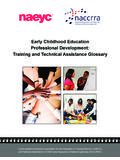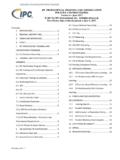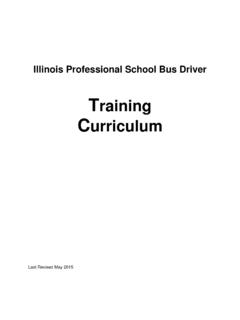Transcription of Pikes Peak Model for Training in Professional …
1 Pikes Peak Model for Training in Professional geropsychology Bob G. Knight University of Southern California Michele J. Karel Department of Veterans Affairs Boston Health Care System and Harvard Medical School Gregory A. Hinrichsen Albert Einstein College of Medicine and American Psychological Association Congressional Fellow Sara H. Qualls University of Colorado, Colorado Springs Michael Duffy Texas A & M University The aging of the population will increase demand for formal Training in aging and felt they needed further Training psychological services for older adults, which challenges to work competently with older adults. the profession of psychology to provide those services. In The past few decades have seen a growth in Training response to that challenge, Professional geropsychology programs to prepare psychologists for work with older has been developing over the past few decades to meet adults, but there has not been a comprehensive Model for current and prepare for anticipated future demand.
2 The development of a range of Training opportunities is impor- Bob G. Knight, Davis School of Gerontology and Department of tant to enable psychologists to work effectively with older Psychology, University of Southern California; Michele J. Karel, De- adults. This article describes the Pikes Peak Model for partment of Veterans Affairs Boston Healthcare System and Depart- Training in Professional geropsychology . The Model is an ment of Psychiatry, Harvard Medical School; Gregory A. Hinrichsen, aspirational, competencies-based approach to Training Department of Psychiatry, Albert Einstein College of Medicine, and American Psychological Association (APA) Congressional Fellow;. Professional geropsychologists that allows for entry points Sara H.
3 Qualls, Department of Psychology and Gerontology Center, at multiple levels of Professional development. University of Colorado, Colorado Springs; Michael Duffy, Counseling Psychology Program, Department of Educational Psychology, Texas A. Keywords: aging, older adults, doctoral programs, intern- & M University. ships, postdoctoral Training This material is the result of work supported with resources from and the use of facilities at the Boston VA Medical Center. Financial support T. was provided by the Retirement Research Foundation; APA (council he aging of the population at large and the corre- discretionary funds); Section II of APA Division 12, Society of Clinical sponding aging of clients receiving psychological geropsychology ; APA Division 20, Adult Development and Aging; APA.
4 Services have been recognized for some time ( , Board of Educational Affairs; APA Committee on Division/APA Rela- tions; APA Division 40, Clinical Neuropsychology; Association of Psy- Knight, Kelly, & Gatz, 1992; Qualls, Segal, Norman, Nie- chology Postdoctoral and Internship Centers; APA Division 12, Society of derehe, & Gallagher-Thompson, 2002). Workforce short- Clinical Psychology; APA Division 42, Psychologists in Independent ages for geriatric mental health care are predicted to be Practice; and the Council of University Directors of Clinical Psychology. significant (Center for Health Workforce Studies, 2005; We acknowledge consultation on postlicensure issues by Paula Hartmann- Stein and Deborah Frazer.)
5 Halpain, Harris, McClure, & Jeste, 1999; Jeste et al., 1999). We acknowledge the leadership of APA Division 20, Adult Devel- Multiple factors contribute to the quickly growing need for opment and Aging, and Section II of APA Division 12, Society of Clinical geriatric mental health services: the growing number of geropsychology , in planning and providing leadership for the Pikes Peak Conference. In addition to these two groups, the following APA divisions adults over 65 years old (He, Sengupta, Velkoff, & DeBar- and other groups with an interest in this topic were represented by ros, 2005); the aging of the baby boom cohort, which has delegates to the conference: APA Division 35, Society for the Psychology higher rates of mental disorder than the current cohort of of Women; APA Division 40, Clinical Neuropsychology; APA Division older adults ( , Koenig, George, & Schneider, 1994); 42, Psychologists in Independent Practice; APA Division 44, Society for the Psychological Study of Lesbian, Gay, and Bisexual Issues; APA.
6 Rapid growth of the oldest-old population (those over 85 Division 45, Society for the Psychological Study of Ethnic Minority years old), with associated complex mental health needs Issues; Section II of APA Division 12, Society of Clinical Geropsychol- related to chronic illness, dementia, and long-term care; ogy; APA Division 20, Adult Development and Aging; Association of and greater receptivity to mental health services among Psychology Postdoctoral and Internship Centers; and the Council of Counseling Psychology Training Programs. Applications were sought for cohorts now entering older age (Gatz & Smyer, 2001; Jeste et 19 at-large and 7 student delegate positions. The planning committee al.)
7 , 1999; Qualls et al., 2002). Qualls et al. (2002) found that chose these individual delegates to ensure adequate diversity across geo- 69% of respondents to a survey of American Psychological graphical, ethnic, gender, stage-of-career, work setting, and Professional Association (APA) members reported some Professional work interest considerations. Correspondence concerning this article should be addressed to Bob with older adults, with only 3% devoting most of their pro- G. Knight, Ethel Percy Andrus Gerontology Center, University of South- fessional time to older clients. The majority reported very little ern California, Los Angeles, CA 90089-0191. E-mail: April 2009 American Psychologist 205.
8 2009 American Psychological Association 0003-066X/09/$ Vol. 64, No. 3, 205 214 DOI: Conceptual Bases of Professional geropsychology as a Focus of Specialized Training What are some of the issues that define geropsychology as a practice area that requires specialized Training ? Psychological assessment and intervention with older adults and consultation to the care systems that serve them require some distinctive Training beyond what may be offered in general adult clinical or counseling psy- chology Training . Four broad aspects of Professional geropsychology define the field as a distinctive practice area. First, Professional geropsychology has roots in life span developmental psychology, particularly development during adulthood and old age.
9 This tradition emphasizes the importance of research designs that address develop- mental change over the adult years ( , the sequential designs embodied in the Seattle Longitudinal Study;. Bob G. Schaie, 2005). These designs can disentangle developmen- Knight tal change from historical time influences that affect every- one during the same time period as well as from differences between successive birth cohorts that influence the ways in such Training . In this article, we report on the development which generational groups differ ( , the World War II. of the Pikes Peak Model for Training in Professional gero- psychology. The Pikes Peak Model is offered as an aspira- generation, the Boomers, Generation X).
10 The clinical ap- tional Model for Training programs and for individual plication of life span psychology emphasizes the impor- psychologists and psychologists in Training who may seek tance of understanding normal aging before attempting to guidance in selecting programs or creating self-study pro- work with older adults with psychological disorders grams on their own. (Knight, 2004). The Pikes Peak Model takes the position that spe- Second, Professional geropsychology requires knowl- cific Training in geropsychology is not needed by all edge of and skills relevant to late-life psychopathologies, psychologists who see older adult clients. Most practi- including those with higher prevalence in later life, espe- tioners will see some older adults who are similar to the cially the dementias, and those with different presentations, younger adults in their practice and will do competent etiologies, or treatment implications in older adults, includ- work with them.










